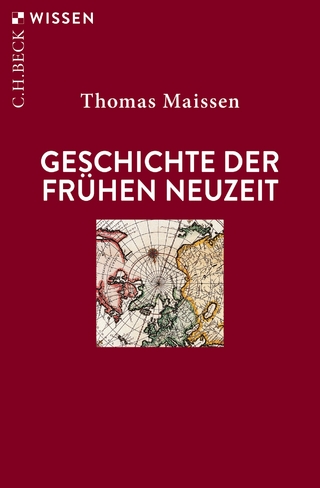
A Year in Seventeenth-Century Kyoto
Edo-Period Writings on Annual Ceremonies, Festivals, and Customs
Seiten
2023
University of Hawai'i Press (Verlag)
978-0-8248-9298-2 (ISBN)
University of Hawai'i Press (Verlag)
978-0-8248-9298-2 (ISBN)
Explains Japanese conceptions of time and space within which annual celebrations took place and outlines how these were chronicled, described, and interpreted up to the seventeenth century. The book also offers translations of writings from the seventeenth century that describe the dates, sites, meanings, and histories of many annual events.
Before the twentieth century, Japanese religious and cultural life was shaped by a variety of yearly ceremonies, festivals, and customs. These annual events (nenju gyoji) included Shinto festivals in which participants danced through the night to boisterous music and Buddhist temple practices that honored deities, great priests, or temple founders with solemn rituals and prayers—and sometimes, when the Buddha was invoked, raucous dancing. Temples also hosted popular fairs, where holy objects and artwork were displayed to the faithful and curious. Countless other celebrations were held annually at the residences of the nobility and military elite and at commoner domiciles. Kyoto, the imperial—and cultural—capital since the eighth century, was the center of many of these events. From Kyoto festivals, rituals, and celebrations diffused to other parts of the land, ultimately shaping religious, artistic, and everyday life as a whole. By the seventeenth century the Kyoto public wished to inform itself more accurately about nenju gyoji and their dates and meanings. As a result, a growing number of guidebooks and almanacs were written and published for the urban populace.
This volume is the first to present translations of two such publications. Introductory chapters explain Japanese conceptions of time and space within which annual celebrations took place and outline how ceremonies and festivals in and about Kyoto were chronicled, described, and interpreted from the earliest times to the seventeenth century. The final two chapters offer annotated translations of writings from the seventeenth century that catalogue and describe the dates, sites, meanings, and histories of many Kyoto annual events. The two works, one largely historical, the other more ethnographic in nature, indicate not only when and where observances and commemorations took place, but also how their authors understood the significance of each. Both translations feature a large number of illustrations depicting events as they appeared in Kyoto at the time.
Before the twentieth century, Japanese religious and cultural life was shaped by a variety of yearly ceremonies, festivals, and customs. These annual events (nenju gyoji) included Shinto festivals in which participants danced through the night to boisterous music and Buddhist temple practices that honored deities, great priests, or temple founders with solemn rituals and prayers—and sometimes, when the Buddha was invoked, raucous dancing. Temples also hosted popular fairs, where holy objects and artwork were displayed to the faithful and curious. Countless other celebrations were held annually at the residences of the nobility and military elite and at commoner domiciles. Kyoto, the imperial—and cultural—capital since the eighth century, was the center of many of these events. From Kyoto festivals, rituals, and celebrations diffused to other parts of the land, ultimately shaping religious, artistic, and everyday life as a whole. By the seventeenth century the Kyoto public wished to inform itself more accurately about nenju gyoji and their dates and meanings. As a result, a growing number of guidebooks and almanacs were written and published for the urban populace.
This volume is the first to present translations of two such publications. Introductory chapters explain Japanese conceptions of time and space within which annual celebrations took place and outline how ceremonies and festivals in and about Kyoto were chronicled, described, and interpreted from the earliest times to the seventeenth century. The final two chapters offer annotated translations of writings from the seventeenth century that catalogue and describe the dates, sites, meanings, and histories of many Kyoto annual events. The two works, one largely historical, the other more ethnographic in nature, indicate not only when and where observances and commemorations took place, but also how their authors understood the significance of each. Both translations feature a large number of illustrations depicting events as they appeared in Kyoto at the time.
Gerald Groemer is professor of Japanese and Western music history at the University of Yamanashi in Kōfu, Japan.
| Erscheinungsdatum | 03.10.2023 |
|---|---|
| Zusatzinfo | 65 b&w illustrations |
| Verlagsort | Honolulu, HI |
| Sprache | englisch |
| Maße | 152 x 229 mm |
| Gewicht | 207 g |
| Themenwelt | Geschichte ► Allgemeine Geschichte ► Neuzeit (bis 1918) |
| Geisteswissenschaften ► Geschichte ► Regional- / Ländergeschichte | |
| Sozialwissenschaften ► Ethnologie ► Volkskunde | |
| Sozialwissenschaften ► Soziologie | |
| ISBN-10 | 0-8248-9298-4 / 0824892984 |
| ISBN-13 | 978-0-8248-9298-2 / 9780824892982 |
| Zustand | Neuware |
| Informationen gemäß Produktsicherheitsverordnung (GPSR) | |
| Haben Sie eine Frage zum Produkt? |
Mehr entdecken
aus dem Bereich
aus dem Bereich
Giordano Bruno - ein ketzerisches Leben
Buch | Hardcover (2024)
C.H.Beck (Verlag)
29,90 €


